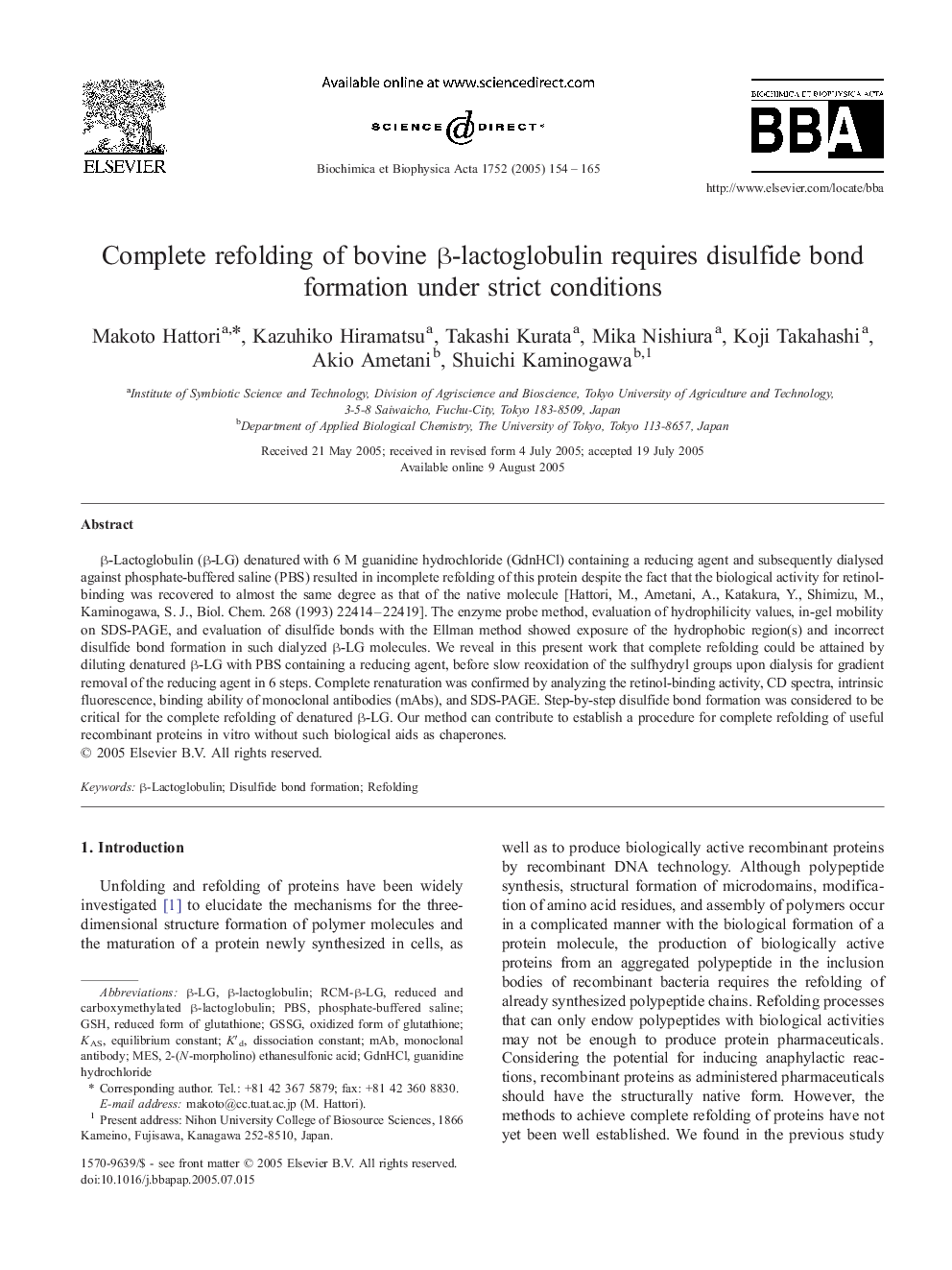| Article ID | Journal | Published Year | Pages | File Type |
|---|---|---|---|---|
| 10537615 | Biochimica et Biophysica Acta (BBA) - Proteins and Proteomics | 2005 | 12 Pages |
Abstract
β-Lactoglobulin (β-LG) denatured with 6 M guanidine hydrochloride (GdnHCl) containing a reducing agent and subsequently dialysed against phosphate-buffered saline (PBS) resulted in incomplete refolding of this protein despite the fact that the biological activity for retinol-binding was recovered to almost the same degree as that of the native molecule [Hattori, M., Ametani, A., Katakura, Y., Shimizu, M., Kaminogawa, S. J., Biol. Chem. 268 (1993) 22414-22419]. The enzyme probe method, evaluation of hydrophilicity values, in-gel mobility on SDS-PAGE, and evaluation of disulfide bonds with the Ellman method showed exposure of the hydrophobic region(s) and incorrect disulfide bond formation in such dialyzed β-LG molecules. We reveal in this present work that complete refolding could be attained by diluting denatured β-LG with PBS containing a reducing agent, before slow reoxidation of the sulfhydryl groups upon dialysis for gradient removal of the reducing agent in 6 steps. Complete renaturation was confirmed by analyzing the retinol-binding activity, CD spectra, intrinsic fluorescence, binding ability of monoclonal antibodies (mAbs), and SDS-PAGE. Step-by-step disulfide bond formation was considered to be critical for the complete refolding of denatured β-LG. Our method can contribute to establish a procedure for complete refolding of useful recombinant proteins in vitro without such biological aids as chaperones.
Keywords
Related Topics
Physical Sciences and Engineering
Chemistry
Analytical Chemistry
Authors
Makoto Hattori, Kazuhiko Hiramatsu, Takashi Kurata, Mika Nishiura, Koji Takahashi, Akio Ametani, Shuichi Kaminogawa,
